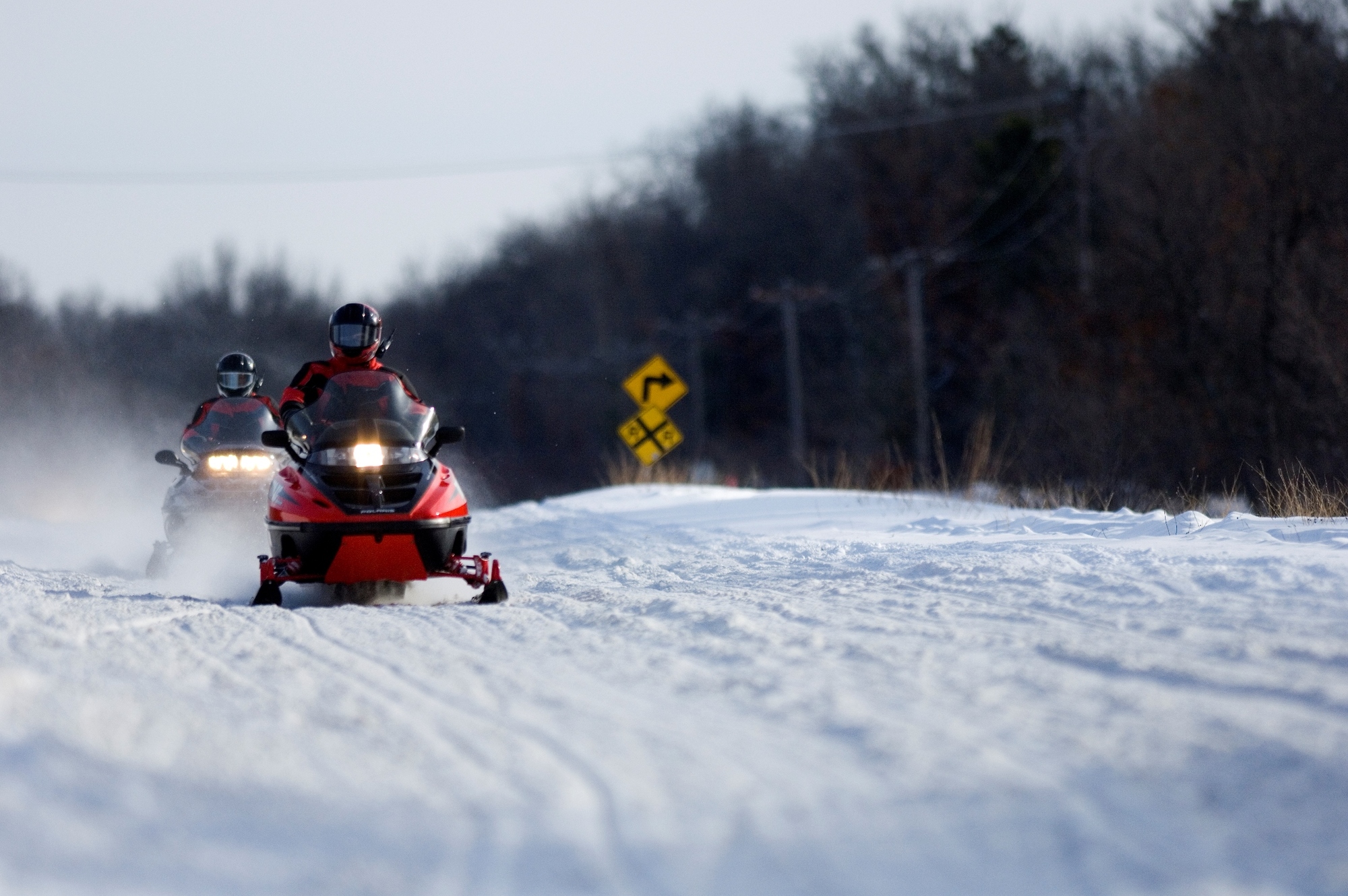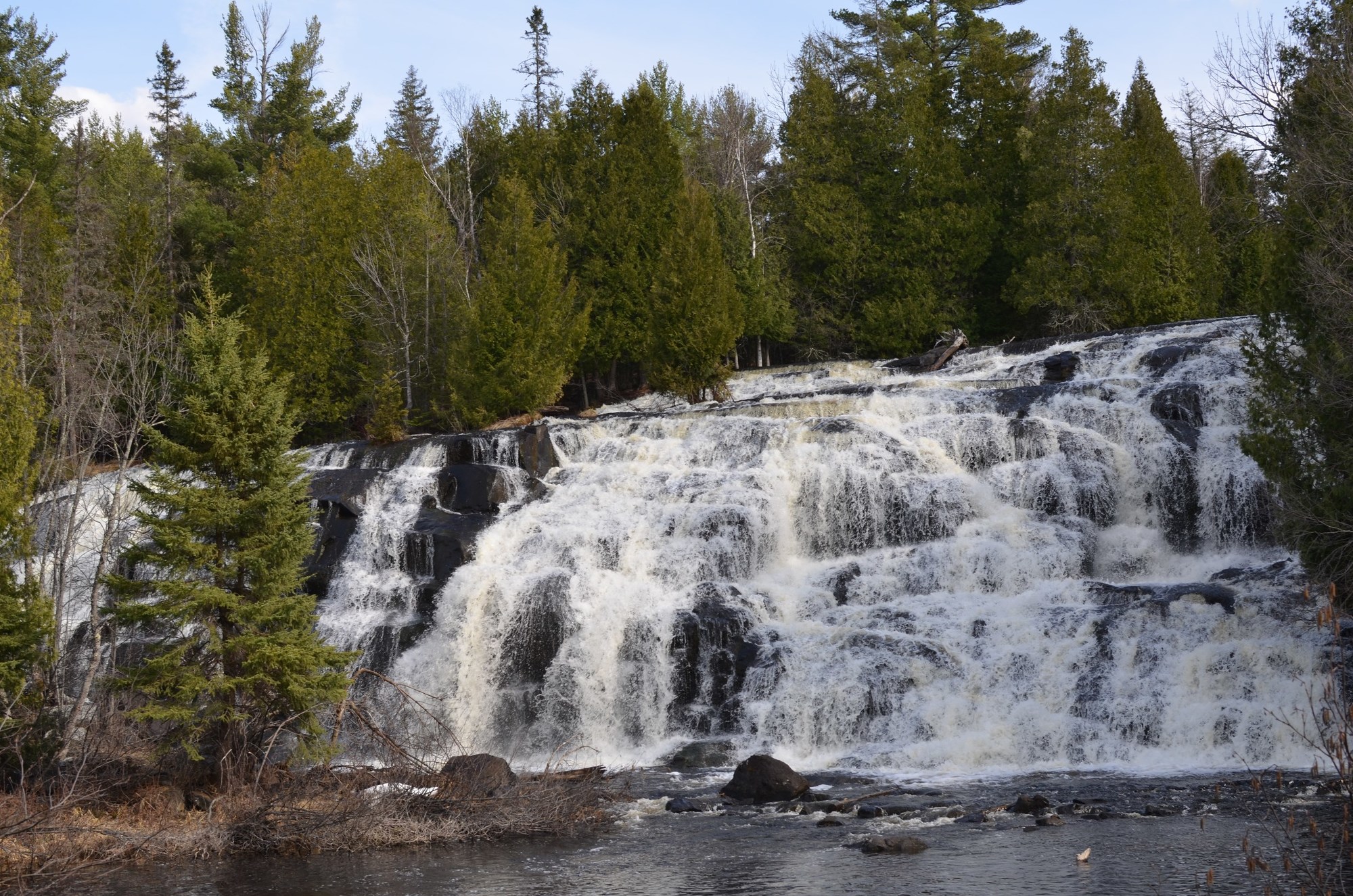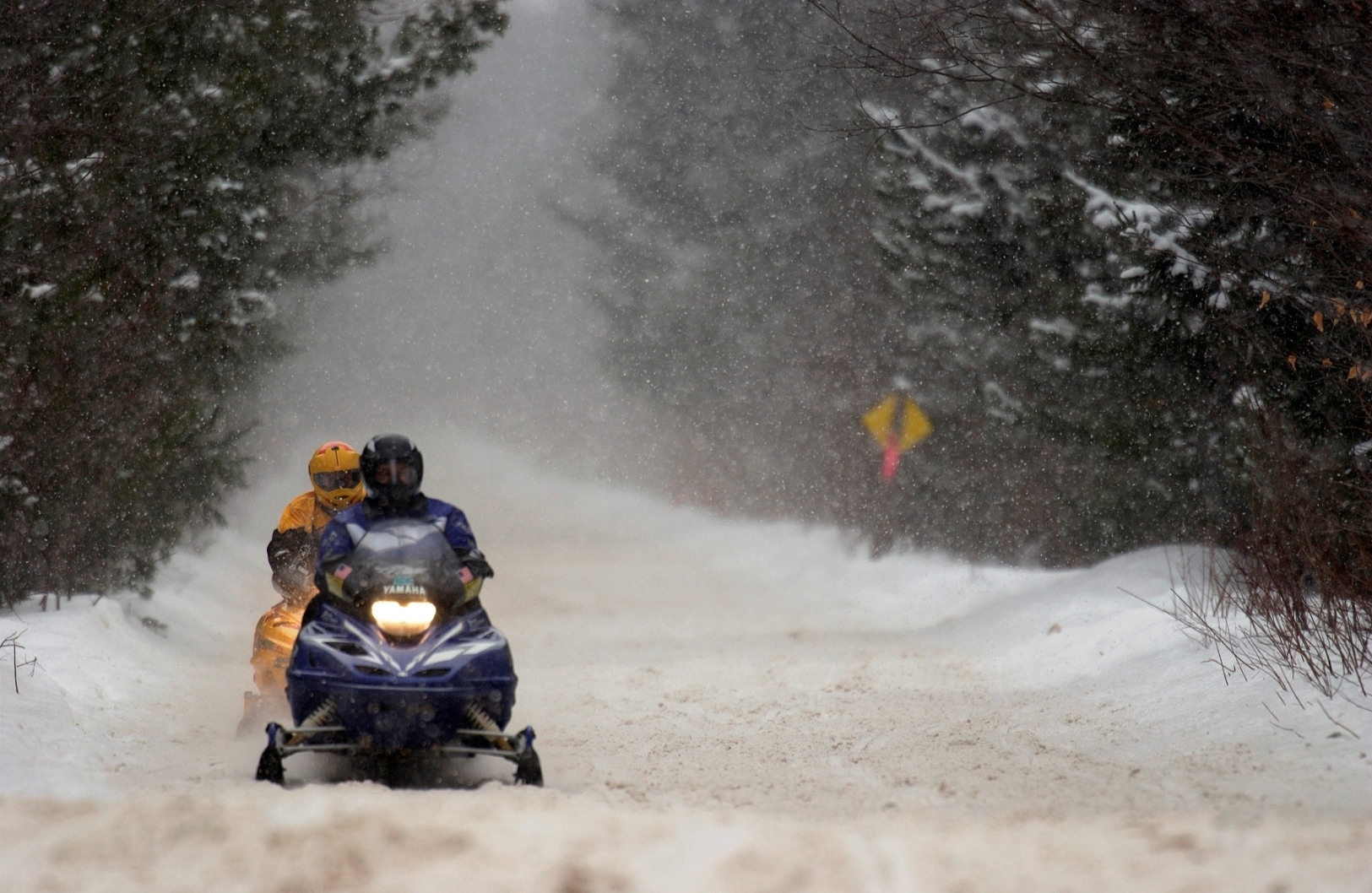Snowmobilers in the know, know Michigan is where to go
State is home to thousands of miles of trails, great riding opportunities
Ask snowmobilers around the country about the best places to ride a sled, and the Great Lakes State is sure to come up in conversation.
Michigan is known by snowmobilers nationally for its unique combination of abundant and dependable snow, exciting terrain and an extensive network of nearly 6,500 miles of designated snowmobile trails.
American Snowmobiler magazine recently featured Michigan’s western Upper Peninsula on the top of its list of “25 Epic Snowmobiling Destinations.”
“The area's location by Lake Superior guarantees plenty of lake-effect snow each winter. This natural phenomenon coupled with state-of-the-art grooming equipment makes the western U.P. a premier destination in the Midwest,” the magazine said. “As you travel over 2,000 miles of trails you can see Lake Superior ice caverns, scenic overlooks, frozen waterfalls and abandoned railroad beds that lead you over majestically high trestle bridges.”
Over the past several years, SnowGoer magazine has named the Upper Peninsula the best overall snowmobiling area, as well as the area with the most scenic snowmobiling and the best trail riding.
“If you close your eyes and imagine perfect riding, what do you see? Do you visualize trails weaving through the forest? Do you see hotels with more snowmobiles than cars in the parking lot?” said an excerpt from SnowGoer. “Well, welcome to the best all-around snowmobile spots in North America. The Upper Peninsula of Michigan, with an average snowfall of 60 to over 200 inches, offers plenty of snowmobiling amid spectacular natural beauty.”
As these national publications have recognized, Michigan’s draw for snowmobilers, besides the plentiful snow and vast trail network, is the unique opportunity for sightseeing along the way – and a great deal of those sights to see are located in Michigan’s state parks.
“A lot of snowmobilers visit places like the Lake of the Clouds in Porcupine Mountains Wilderness State Park, Indian Lake State Park and Tahquamenon Falls State Park,” said Ron Yesney, U.P. trails coordinator for the Michigan Department of Natural Resources. “Bond Falls and Brockway Mountain are other popular sightseeing destinations as well.”
The U.P. has about 3,300 miles of state snowmobile trails, which connect communities, provide access to beautiful scenery and draw riders from near and far.
 “We really have an outstanding snowmobile system in the U.P., that's very accessible and links you to snowmobile-friendly towns,” said Rob Katona, DNR central U.P. trail specialist. “We really have an outstanding snowmobile system in the U.P., that's very accessible and links you to snowmobile-friendly towns,” said Rob Katona, DNR central U.P. trail specialist.
The northern Lower Peninsula also is a popular snowmobiling destination.
The new, highly anticipated Snowmobile Trail No. 37 in Wexford and Manistee counties recently opened for the 2016-17 snowmobile season. The 16.5-mile trail, which runs from Yuma to Copemish, connects the trail systems near Cadillac to trails north in Benzie, Manistee and Leelanau counties.
“This new connector trail will greatly enhance snowmobiling opportunities in the northwest Lower Peninsula, as well as increase tourism in towns such as Mesick and Copemish,” said Todd Neiss, a DNR recreation specialist who works out of the Cadillac office.
Another northern Michigan snowmobiling hotspot is the Gaylord area, which – according to American Snowmobiler – “offers great winter fun with rolling hills, thousands of acres of unspoiled forests and reliable snowfall.
“Sledders are welcomed by local businesses and you can ride your machine right up to your door and back out onto the trail. Plus there are many trail connectors for uninterrupted travel.”
The magazine calls the trail from Gaylord to Indian River “the crown jewel of snowmobile trails in northern Michigan. The trail runs along an abandoned railroad corridor, crosses the Sturgeon River and winds through some of the most spectacular scenery in northern Michigan.”
While the focus tends to be on the Upper Peninsula and northern Lower Peninsula when it comes to snowmobiling, there are plenty of opportunities to ride in southwestern Michigan as well, with about 700 miles of sled trails.
“There are a lot of trails in southwest Michigan that are close to population centers that many folks don’t even think about. Many of these trails go through DNR lands, and can be very scenic,” Neiss said. “While snow conditions are much more temperamental in southwest Michigan than in the north, if you catch it right, there is no need to drive hundreds of miles to ride.”
There are snowmobiling trails on National Forest lands too, which riders often use along with state trail routes.
“There are 1,157 miles of designated snowmobile trails on National Forest system lands. The U.S. Forest Service and Michigan DNR work together with club sponsors to ensure these trails are maintained,” said Kristen Thrall, recreation and hydropower program manager and forest accessibility coordinator for the Huron-Manistee National Forests. “We have worked together since the 1970s to develop a high-quality long-distance system that connects communities to the great outdoors.”
According to a 2012 National Visitor Use Monitoring Study, 27 percent of people recreating in the national forests identify snowmobiling as their primary activity.
There is plenty of information available on the DNR website to help plan a snowmobiling adventure – including trail maps in a variety of formats and links to trail reports from organizations like the Michigan Snowmobile Association.
Snowmobilers need to purchase a snowmobile trail permit, which is required to operate snowmobiles in Michigan and is valid for one year, from Oct. 1 to Sept. 30. Riders also need to register their snowmobile, as a valid registration from the Secretary of State (or another state or province) is required to ride as well.
Those new to snowmobiling who would like to try out this fun winter experience should consider rental snowmobiles that are available.
The coming week (Jan. 21-29) is International Snowmobile Safety Week, a great time to brush up on how to stay safe while out on the trail.
“Safety is the most important aspect of this sport,” said Lt. Pete Wright, a DNR district law supervisor. “Safe snowmobiling means riding within your own capabilities, operating at safe and appropriate speeds for the terrain, and never drinking alcohol before or while driving. Always wear a helmet and adequate clothing, stay on the designated trails, and always snowmobile with another person, never alone.”
Other safety tips from the DNR include:
- Always keep your machine in top mechanical condition.
- Pick safe places to stop off the trail.
- Be aware of changing trail conditions.
- Use extra caution when riding on an unfamiliar trail.
- Stay far enough behind other riders to avoid the snow kicked up by their machines. This flying snow may blind snowmobilers to hazards, including other riders.
- Check the weather conditions before you depart.
- When possible, avoid crossing frozen bodies of water. Never operate in a single file when crossing frozen bodies of water.
- Always be alert to avoid fences and low-strung wires.
- Never operate on a street or highway.
- Always look for depressions in the snow.
- Keep headlights and tail lights on at all times.
- When approaching an intersection, come to a complete stop, raise off the seat and look both ways for traffic.
- Steer clear of trail groomers if you can. Never follow a groomer, give groomers the right of way, and if you meet one head-on, give it room to maneuver.
Snowmobilers also should make sure they are familiar with all of the rules and regulations for snowmobiling in Michigan, as well as the universal snowmobile trail signage the DNR developed to help keep everyone safe on the trails.
 Snowmobile safety education training and online safety courses are recommended for all snowmobile operators and are required for youth 12 to 16 years old. Snowmobile safety education training and online safety courses are recommended for all snowmobile operators and are required for youth 12 to 16 years old.
In 2016, Michigan had more than 200,000 registered snowmobiles – only Minnesota and Wisconsin had more, according to a report from the International Snowmobile Manufacturers Association.
The same report indicates that, in the United States, snowmobiling has an economic impact of $26 billion annually and that the average rider spends $4,000 each year on snowmobile-related recreation.
It’s clear that snowmobiling contributes significantly to Michigan’s tourism industry and the state’s economy.
“I snowmobile quite a bit and meet all kinds of wonderful people out being safe on the trails, spending money, and enjoying the U.P.,” Yesney said.
Snowmobiling is a social sport, with clubs throughout the state. The Michigan Snowmobiling Association maintains a list of clubs at www.msasnow.org/snowmobile-clubs.
Check out a DNR video about Michigan snowmobiling.
Learn more about snowmobiling in Michigan at michigan.gov/snowmobiling.
Catch upcoming stories by subscribing to free, weekly “Showcasing the DNR” articles. Check out previous Showcasing articles.
/Note to editors: Contact: Todd Neiss, 231-775-9727, ext. 6045 or John Pepin, 906-226-1352. Accompanying photos are available below for download and media use. Suggested captions follow. Credit: Michigan Department of Natural Resources, unless otherwise noted.
Coalwood (DSK25-091): A group of snowmobilers gets ready to explore the Coalwood Grade Snowmobile and ORV Trail in the central Upper Peninsula.
Falls: Bond Falls in Ontonagon County is a popular spot to sightsee when snowmobiling in the western Upper Peninsula.
Highway (DSK25-148): A rider heads out on a trail, having just made a highway crossing. Michigan has more than 6,000 miles of snowmobile trails to enjoy.
Rapids: Rapids above Bond Falls in Ontonagon County are shown from a late winter day.
Riders (DSK25-102): A couple of sledders get a chance to enjoy a Michigan snowmobile ride.
Sleds (DSK363-036): Michigan’s snowmobile trails are among the finest anywhere./
The Michigan Department of Natural Resources is committed to the conservation, protection, management, use and enjoyment of the state’s natural and cultural resources for current and future generations. For more information, go to www.michigan.gov/dnr.
|


 “We really have an outstanding snowmobile system in the U.P., that's very accessible and links you to snowmobile-friendly towns,” said Rob Katona, DNR central U.P. trail specialist.
“We really have an outstanding snowmobile system in the U.P., that's very accessible and links you to snowmobile-friendly towns,” said Rob Katona, DNR central U.P. trail specialist.






